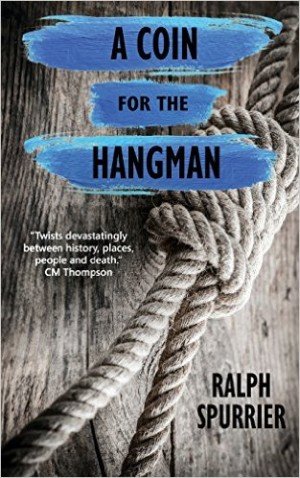
It’s a curious thing for an author to make himself a character in his own book, and proves slightly unnerving to start with. However, the fictional version of Ralph Spurrier does not detain us for too long. A book dealer, in the story he buys a job lot of assorted titles as a bungalow is cleared following the death of its owner. Among the titles is a copy of Albert Pierrepoint’s autobography. Pierrepoint was, in fact, the most notable British hangman of the 20th century. The fictional Pierrepoint has inscribed this copy of his story to the man whose bungalow has just been cleared, one Reginald Manley.
Spurrier also finds a box containing some of the macabre trappings of the executioners trade, and a diary. This diary is not Manley’s but is a chilling account written by a condemned man – Henry Eastman – in the last weeks of his life, up to the hours just before Manley pulled the lever that sent him to heaven or hell.
The main body of the book is set at the end of World War II, and in the austerity years that took England into the 1950s. Manley experiences the horrific days when he and a fellow soldier, George Tanner, were among the first Allied troops to break their way into Belsen. We watch Henry Eastman and his mother, Mavis, as they struggle to keep their sweet shop open after the death of Henry’s father, and in the face of the cruel grip of rationing. We learn that Reg and George had ‘special duties’ after the cessation of hostilities in Europe, and we watch helplessly as Eastman’s bond with his mother is loosened bit by bit when she meets the newly demobbed George Tanner.
And there is a murder, there is a trial, and there is a conviction followed by a death sentence. Does Henry’s diary exonerate him and identify the real culprit? Was justice done on that grim day when Reg’s scrupulously detailed plans for a swift and humane dispatch of the condemned man went so badly wrong? Spurrier – both the book seller and the author – gives us clues, draws his own conclusions, but leaves us to make up our minds.
The storytelling device whereby we observe the separate lives of a handful of different people, as yet unaware of each other, but destined by fate to collide, is old and widely used. It has to be said that Spurrier handles the narrative with great élan, and there is a real and heart-tugging sense of foreboding, particularly as we read about Henry’s lonely childhood, knowing – as he and his widowed mother cannot – what will happen to him. Add to this Spurrier’s evident love for the English landscape, and the magic of the railways which once bound communities together, and you have a novel of the highest quality. The author cleverly borrows a phrase from World War I poet Wilfred Owen‘s Strange Meeting to describe Henry’s relationship with the young refugee, Madeleine. It is, indeed a love “too deep for taint.”
Occasionally – no, make that once in a blue moon – a book comes along that is so mesmerising and thought provoking that one fears that a review, however enthusiastic, may not do it justice. This is one such book. The quirks of fate, the misplaced word and the unfortunate coincidences that can shape lives, all are described with candour and a sense of compassion. These human twists are woven into heartbreaking descriptions of an England long since disappeared. The sense of loss that hovers over the story is almost palpable. There are no happy endings in this tale, but if you love the English novel and admire fine writing, then put this at the top of your reading list.
For more World War II crime fiction, click here.
Hookline Books
Print/Kindle
£4.00
CFL Rating: 5 Stars